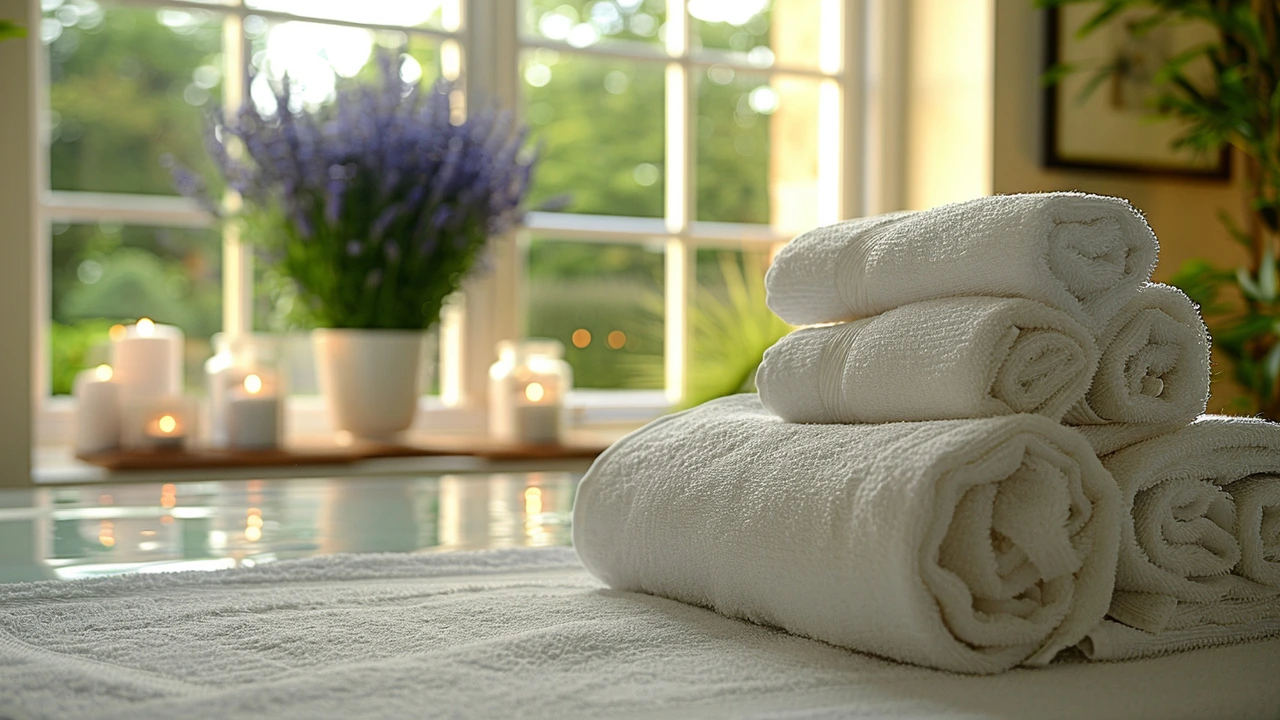Sports Massage: The Key to Faster, Smarter Sports Rehab

Ever wonder why top athletes always have a massage therapist on their rehab team? Sports massage isn’t just a ‘feel good’ add-on—it’s a game-changer for recovery. If you’re trying to bounce back from an injury or push through a tough comeback, skipping the massage part can slow everything down.
Sports massage works way deeper than typical relaxation massage. Therapists use targeted pressure and smart techniques to release tight spots, ramp up blood flow, and get those stubborn muscles moving again. The cool part? Better circulation means more nutrients delivered straight to muscles and faster clearing of waste products that cause soreness.
If you’ve ever been sidelined and frustrated, you know how much every little edge matters. Adding sports massage to your rehab plan isn’t just smart—it’s essential for getting off the bench and back on your feet, faster and stronger.
- Breaking Down Sports Massage
- Why Every Athlete Needs It During Rehab
- Real Gains: What Science Shows
- Top Techniques Used in Rehab
- Simple Tips for Getting the Most from Your Sessions
- Counting the Long-Term Benefits
Breaking Down Sports Massage
Sports massage isn’t just one-size-fits-all. It’s an approach that targets how the body moves and responds to strain, especially when someone’s trying to recover from an injury or intense training. Unlike regular massage, sports massage uses techniques based on anatomy and performance goals. Think of it as your body’s tune-up between game days or after pulling a muscle.
Here’s what actually goes into a proper sports massage session:
- Deep Tissue Work: Therapists dig into specific muscle layers to break up tight spots caused by exercise, repetitive moves, or injuries.
- Trigger Point Release: They find stubborn knots and work them out, which can help with those annoying ‘it just won’t go away’ aches.
- Myofascial Release: This technique loosens the body’s fascia—the webby stuff wrapping around muscles—so movement feels smooth again.
- Stretching and Mobilizing: Guided stretches during the session help muscles regain length, flexibility, and power.
Now, here’s a key fact: massage isn’t just about working sore spots. It also revs up circulation and helps the body pump out waste chemicals like lactic acid that make muscles stiff and tired. Improved blood flow means faster delivery of oxygen and nutrients, so tissues repair themselves more quickly.
"Sports massage should be considered not just for pampering, but as a necessity for optimal recovery," says Dr. Jenny Liu, lead researcher in a 2023 review from the American Journal of Sports Medicine.
To paint the bigger picture, check out this quick comparison of regular vs. sports massage based on recent clinic data:
| Feature | Regular Massage | Sports Massage |
|---|---|---|
| Main Goal | Relaxation | Rehab & Performance |
| Target Areas | General Body | Specific Injuries or Muscles |
| Pressure Level | Light to Medium | Medium to Deep |
| Use in Recovery | Sometimes | Essential |
No matter your sport or rehab goal, the sports massage approach is designed to help athletes heal, bounce back, and even avoid future injuries. Getting the right kind at the right time makes a real difference in results.
Why Every Athlete Needs It During Rehab
If you’ve ever waited out a sports injury, you know it’s not just about healing bones or muscles. It’s about getting moving safely and stopping tiny problems from turning into bigger ones down the line. That’s where sports massage pulls its weight.
Right after an injury, muscles tense up around hurt areas. This is your body’s way of bracing itself, but letting them stay that tight slows your comeback. Sports massage breaks up those knots and helps prevent scar tissue from sticking around and messing with your movement.
One of its most important roles? Cutting down swelling and helping blood flow. Better circulation means more oxygen and nutrients arrive where they’re needed, and waste products get pushed out. This helps reduce stiffness, keeps swelling in check, and can take the edge off pain without popping extra painkillers.
Sports massage is also a mental boost in rehab. You’re not just lying there – you’re doing something proactive for your body. This sense of control can keep you from losing your mind when you’re itching to play again.
- Shortens recovery time after injuries by helping repair muscle fibers.
- Lowers the risk of repeat injuries by improving flexibility and range of motion.
- Reduces post-injury swelling and bruising so you can get moving sooner.
- Calms the nervous system and supports mental recovery, which gets ignored during most rehabs.
Skipping out on sports massage means missing real, proven benefits that make a difference—not just for pros but for weekend warriors, too.
Real Gains: What Science Shows
Science doesn’t just support using sports massage in rehab—it makes a pretty convincing case for it. Research from the National Institutes of Health shows that including sports massage in recovery plans can actually speed up muscle repair after injuries or intense workouts. People who got regular sports massage bounced back faster and reported way less muscle soreness than folks who skipped it.
One widely cited study from the University of Illinois found that athletes who received sports massage right after hard exercise showed better muscle strength and flexibility just a few days later compared to those who only rested. That means fewer days lost sitting on the sidelines, and a real edge in getting back to training sooner.
Here are some specific benefits highlighted in recent clinical research:
- Reduces swelling and inflammation: Studies found that targeted massage can help the body flush out excess fluids that lead to swelling after an injury.
- Improves joint flexibility: Regular massage loosened up tight spots, making it easier to restore normal movement without pain.
- Lowers stress hormones: Measurable drops in cortisol (the body’s main stress hormone) help the body shift from a “fight or flight” state to active recovery.
- Boosts overall mood: Recovery can mess with your head—sports massage has been shown to reduce anxiety and depression linked to injury rehab.
Honestly, you don’t have to take my word for it—nearly every top sports clinic now builds massage right into their rehab programs. It’s not just about comfort. It’s about real, measurable recovery gains that you can track and feel for yourself.

Top Techniques Used in Rehab
When it comes to sports massage for rehab, not all techniques are created equal. Good therapists pick the right style for the injury and recovery stage. Here are the methods you’ll run into most often:
- Deep Tissue Massage: This style digs into muscle layers to break up knots and scar tissue, making stiff or injured areas looser. It’s key for clearing out built-up tension that slows healing.
- Trigger Point Therapy: You know those stubborn sore spots that just won't quit? Therapists use steady pressure to release them, which can help relieve pain that shoots to other parts of your body.
- Myofascial Release: Fascia is a thin layer covering your muscles. When it gets tight, everything feels off. This slow, gentle technique stretches out the fascia, improving movement and easing pain.
- Lymphatic Drainage: Injuries can make you swell up. This gentle, rhythmic massage helps move fluid out, reducing puffiness and helping the body clean up waste from healing tissues.
- Sports Stretching: It’s not just about flexibility. Adding specific stretches during a massage session helps improve range of motion in injured joints so you get moving again faster.
A study posted in the Journal of Sports Rehabilitation showed that deep tissue and trigger point work reduced muscle soreness by up to 30% within the first week of injury, compared to basic rest. That’s good news for anyone itching to get back on track.
| Technique | Main Benefit |
|---|---|
| Deep Tissue | Breaks up knots, scar tissue |
| Trigger Point | Relieves stubborn pain spots |
| Myofascial Release | Improves flexibility, movement |
| Lymphatic Drainage | Reduces swelling, clears waste |
| Sports Stretching | Boosts joint range of motion |
Every rehab journey is different. Some days need a heavy focus on trigger points. Other days, it’s all about gentle stretching and moving fluid. A well-rounded approach keeps your recovery moving in the right direction.
Simple Tips for Getting the Most from Your Sessions
Jumping into a session and hoping for magic isn’t enough—sports massage works best when you make a plan and stick to some tried-and-true habits. It’s not rocket science, but the little things matter big time.
- sports massage makes a real difference if you’re honest with your therapist. Always share where it hurts, what movements make pain worse, and how it feels after each session. Your therapist adjusts the approach based on your feedback.
- Don’t just race home after a massage. Drinking plenty of water before and after a session helps flush out metabolic waste. Even something as simple as a large glass of water makes recovery smoother.
- Try not to eat right before hitting the table. A heavy meal can make you feel queasy when therapists get deep into muscle work. A light snack is fine if you’re hungry.
- Stick with a regular routine during your rehabilitation. Weekly sessions tend to work best for injury recovery compared to here-and-there visits.
- Wear comfy, loose clothes, and ditch the shoes early. It’s less hassle for you and easier for the therapist to work where it matters.
Here’s something cool—according to a study tracked by the American Massage Therapy Association, athletes who added massage to rehab cut recovery time by up to 25% compared to those who only followed basic physical therapy. That’s not just a small difference, it’s literally days or weeks back on the field, especially with sprains or muscle strains.
| Massage Frequency | Average Recovery Time (Days) |
|---|---|
| No Massage | 30 |
| Biweekly | 24 |
| Weekly | 21 |
Scheduling matters. Booking sessions after tough workouts can help your muscles repair faster and cut down on stiffness. Make it part of your schedule, not just an afterthought when pain flares up. Little shifts in your routine mean your massage time works harder for you.
Counting the Long-Term Benefits
Massage therapy isn’t just about instant relief or a quick boost in recovery. Regular sports massage during and after rehab builds real, lasting benefits that help athletes stay in the game longer and cut down on repeat injuries.
If you look at research tracked over the years, athletes who get consistent sports massage have clearer advantages. They bounce back faster, have fewer muscle strains, and recover from hard workouts with less soreness and stiffness. One huge plus? Massage helps keep scar tissue in check, which means less risk of nagging problems down the road.
“We see reduced muscle tightness, better joint mobility, and improved athletic performance with consistent sports massage, even long after the injury is gone.” — Dr. Andrea Holman, physical therapist, 2023
The numbers back it up. A big review from the British Journal of Sports Medicine found athletes using sports massage in their rehab plans saw a 30% reduction in injury recurrence compared to those who skipped it. That’s a difference you feel season after season.
| Benefit | What Happens | Long-Term Impact |
|---|---|---|
| Muscle flexibility | Stays higher | Lower risk of strains |
| Scarring | Breaks down quicker | Better movement, less pain |
| Swelling & stiffness | Reduces after tough sessions | Quicker return to training |
| Re-injury rate | Decreases by about 30% | Longer, healthier playing career |
Set yourself up for the long haul by working sports massage into your regular rehab and training routine. Whether you’re an elite athlete or just getting back on track, the payoff isn’t just quick recovery—it’s about performing better, longer, with less downtime holding you back.





